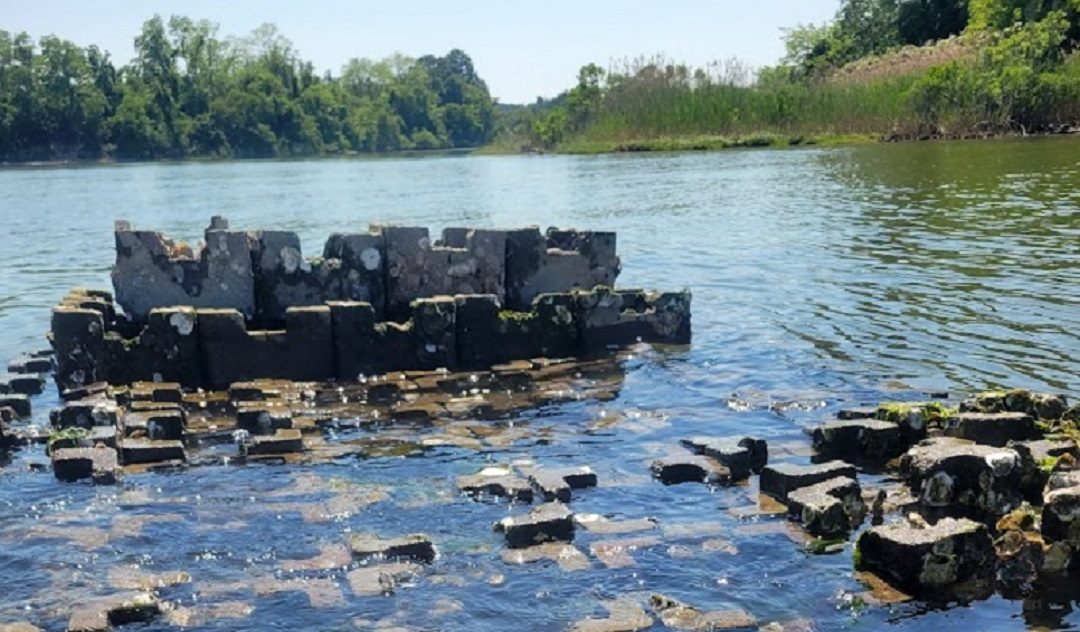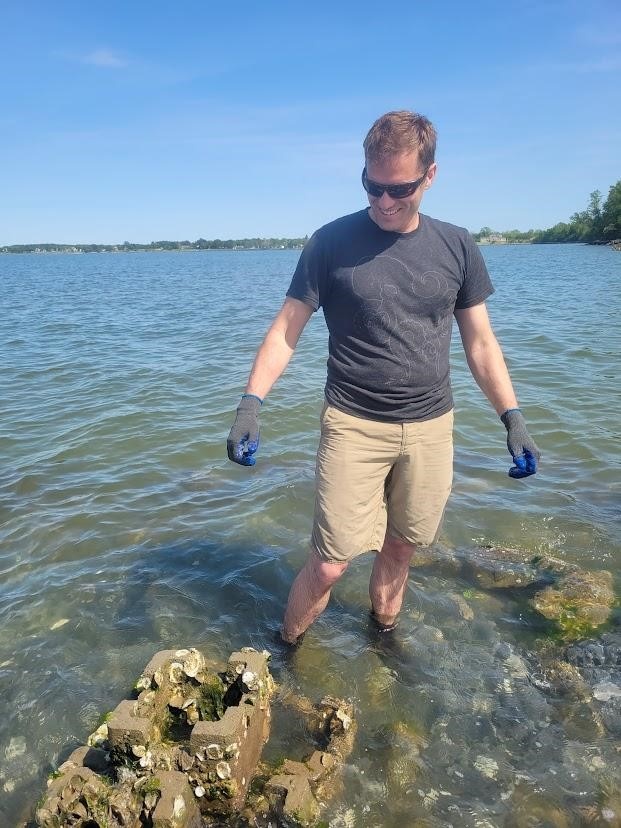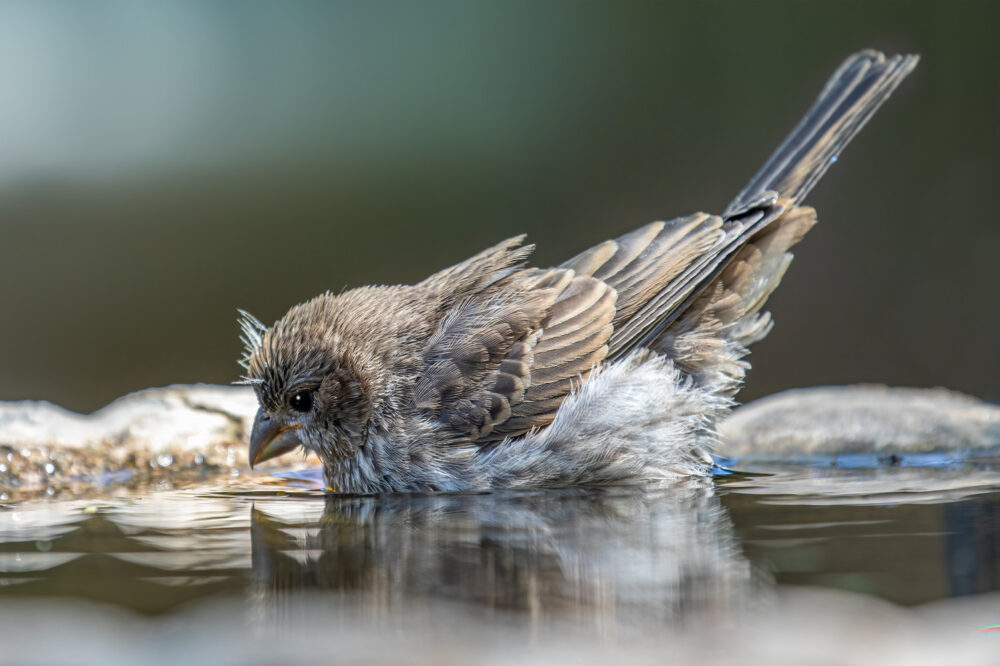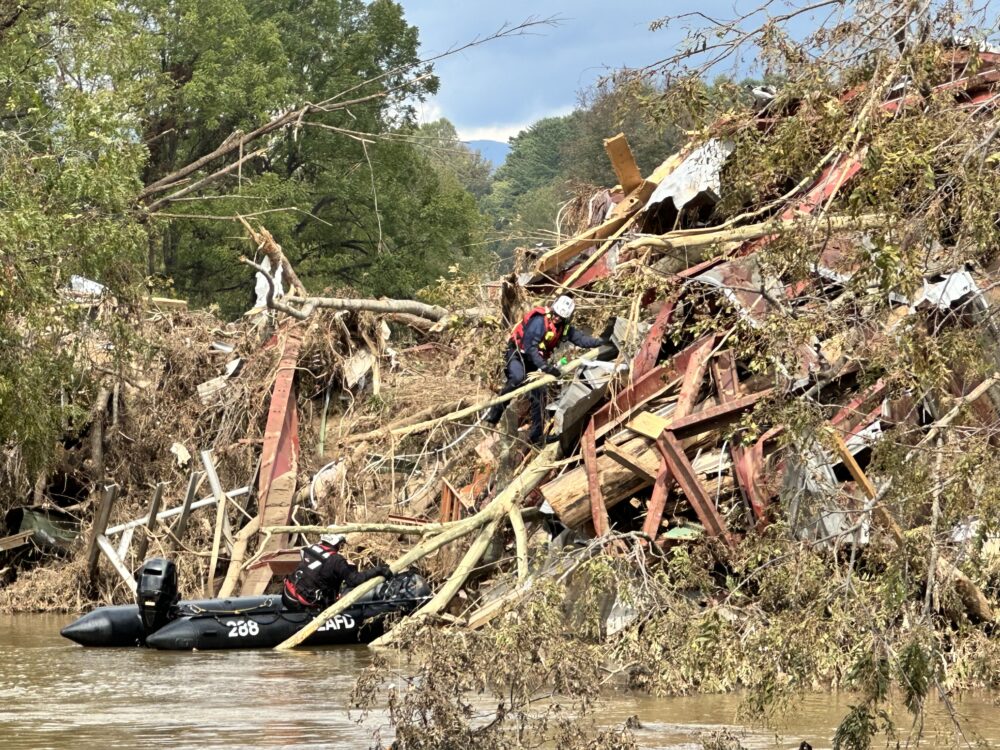We have much more to do and your continued support is needed now more than ever.
Pilot Oyster Retrofit Installed in the Choptank River
The lessons we learned

An Oyster Retrofit is a novel approach to green-gray infrastructure and adapt to sea level rise. This concept was developed by scientists at the University of Maryland Center for Environmental Science’s Horn Point Laboratory and the National Wildlife Federation.
An Oyster Retrofit uses oyster castles, concrete building blocks that create oyster habitat, to add height and habitat to existing breakwaters (rock structures set in the water off a shoreline to reduce wave energy and coastal erosion). Why would one need to add height to existing infrastructure? As sea level rises, marine infrastructure is becoming drowned.
In the Chesapeake Bay, we have already experienced 0.9’ of sea level rise and projections show we are expecting to see an additional 1’ of rising over the next 30 years. That is enough water to inundate a majority of the existing marine infrastructure in the Bay. We are working to create adaptive solutions to this problem.
The pilot study
With our partners, we installed the pilot Oyster Retrofit in the Choptank River. The aging breakwater infrastructure selected for this pilot study was a rock structure completely inundated at low tide. Analysis of the breakwater showed that in even low wind conditions, the structure was not effective at reducing wave energy and sometimes created a shoaling effect where wave energy was higher shoreward of the structure, the opposite of what a breakwater is intended to do.

The Oyster Retrofit installation was successful and we learned a lot along the way. First, we pre-seeded the castles with baby oysters prior to the installation. Seeding oyster castles in oyster setting tanks is labor- and time-intensive and although this was successful, this would not be practical in many situations. Developing a way to seed oyster castles in the water where they are installed would be ideal, and scientists at Horn Point Laboratory have been testing this. Installing an oyster retrofit in an area with natural spat set (baby oysters settling on the structures) would work well.
Second, we learned that oyster castles need to be placed on a flat surface in order to interlock correctly, so priming the existing rock structures or designing the retrofit with this in mind is essential. We used small stone to fill in spaces in the existing structure, which made this project a success.
The third lesson is the value of using a floating barge to get the oyster castles out to the site. This was an efficient way to install the project. Our last major lesson was to not pre-seed the oyster castles too early since the oysters may grow large enough to make it difficult to stack the castles. With all of these lessons learned, future oyster retrofits will be more efficient and effective.
A natural solution
Using oyster castles to protect shorelines is an excellent way to create wildlife habitat and bolster existing infrastructure. Whether the oyster castles are stacked on the river bottom itself to act as more natural breakwaters, or whether they are used to retrofit existing breakwaters, these structures can create an oyster reef-like habitat that is far more beneficial than a traditional stone breakwater.
The National Wildlife Federation is honored to work with scientists and communities to develop innovative solutions to protect people and wildlife from the negative effects of climate change. We will continue to study the Oyster Retrofit during large storms to evaluate its effectiveness and will share lessons learned with adaptation and restoration practitioners widely.





















